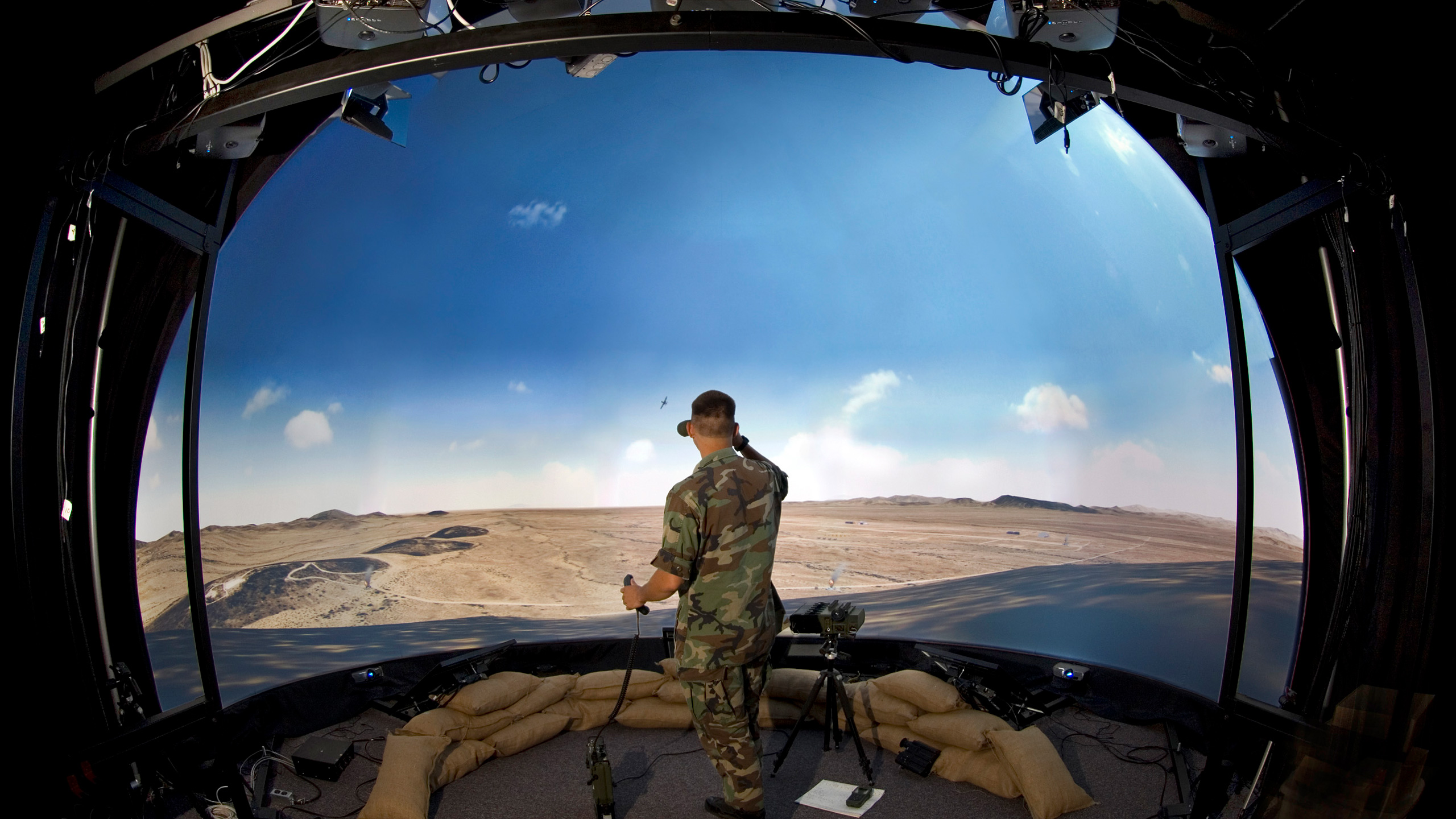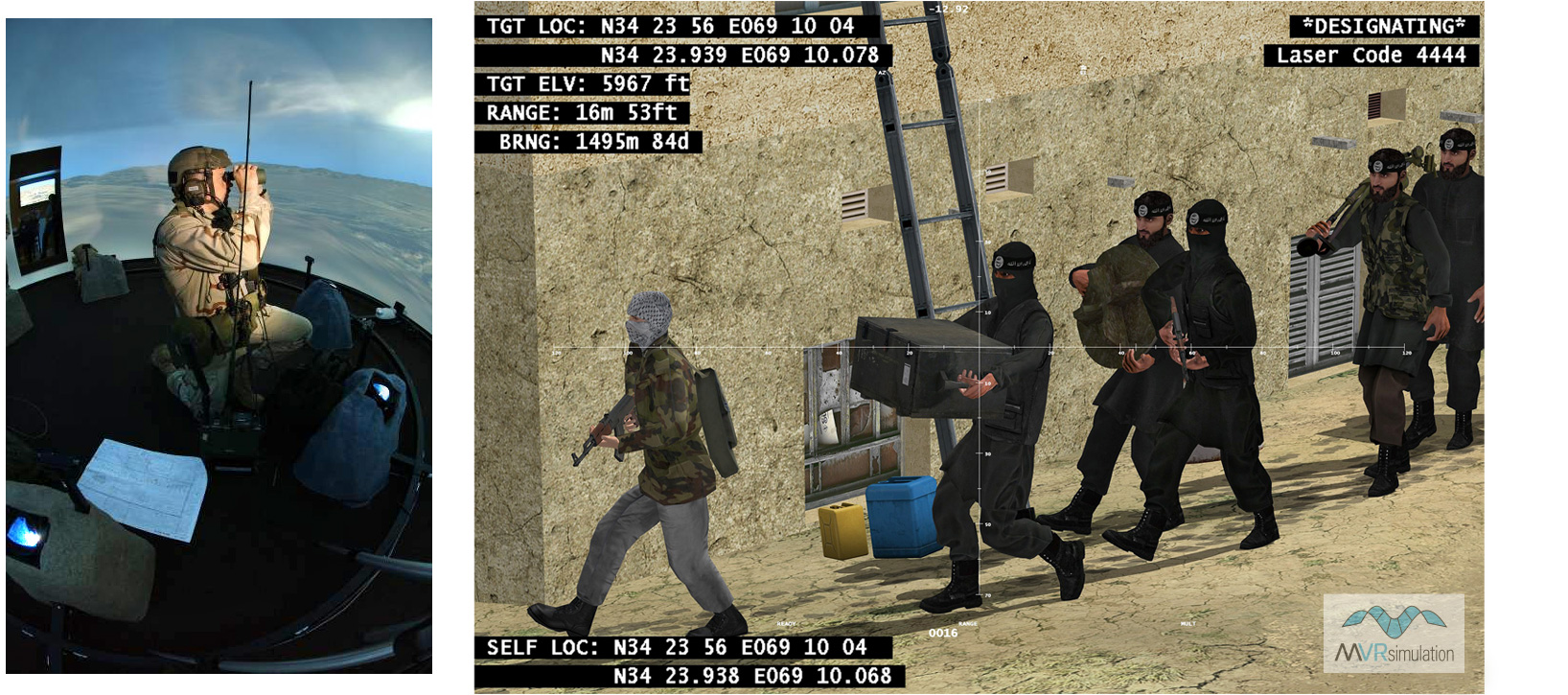AFRL JTAC TRS

The JTAC TRS 5 meter dome simulator with MVRsimulation visuals at the Air Force Research Lab (AFRL). (Photo courtesy of AFRL.)
Since 2007, the Air Force Research Laboratory (AFRL) Warfighter Readiness Research Division, 711th Human Performance Wing, at Wright Patterson Air Force Base (AFB) has used MVRsimulation Virtual Reality Scene Generator (VRSG) in its JTAC training research in three JTAC dome training systems. These three systems, called Joint Terminal Attack Controller Training Rehearsal System (JTAC TRS), were developed and installed in 2007 at the AFRL site in Mesa, AZ, and then moved to Wright-Patterson AFB in 2012. The simulators are the precursors to the next generation JTAC dome training systems currently fielded or in production today. The dome systems provide AFRL with the testbed capability to continue the research and development for training in all facets of CAS and joint fires.
The JTAC TRS system provides a high-fidelity, fully immersive, realistic training and rehearsal environment with real-time sensor, simulator, and database correlation. Its primary focus is to provide a persistent total air-ground virtual training environment for networked air/ground training and mission rehearsals. This prototype system is used to train both JTAC and combat air crews assigned to accomplish complex missions in close proximity to ground forces. The JTAC TRS connects to distributed mission operations networks to enable geographically separated high-fidelity close air support platforms and JTAC and CCT teams to train together. Additionally, the JTAC TRS enables operators to conduct Joint Close Air Support (JCAS) training and mission rehearsal using tailored, dynamic scenarios that are relevant to mission tasking.

Left: JTAC inside AFRL's JTAC training dome, looking through a simulated laser designator. (Photo courtesy of AFRL.) Right: VRSG real-time designator view on MVRsimulation's virtual Afghanistan, which the operator on the left sees when looking through the simulated laser designator with embedded 3D graphics hardware. The VRSG scene shows the laser code and the target location.
The JTAC TRS simulator built by Lockheed Martin, uses 19 VRSG channels, 14 of which are for the dome itself. There are 7 VRSG channels for 360-degrees around the bottom half of the dome, and another 7 channels for the top half of the dome. The remaining VRSG channels are used for various emulated hand-held command and control (C2) devices inside the dome (binoculars, laser range finders, and so on), a sound channel, and a single AAR/stealth channel. The DIS/HLA compliant system interoperates with legacy systems and provides the capability to network with other air and ground simulators, including simulators of the A-10 program.
